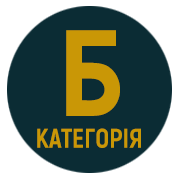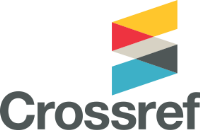PHYSIOTHERAPY AS A COMPONENT OF COMPREHENSIVE REHABILITATION CARE IN CASE OF STROKE
DOI:
https://doi.org/10.32782/pub.health.2025.1.25Keywords:
stroke, physical therapy, acute rehabilitation period, early patient mobilisationAbstract
Topicality. Stroke is one of the leading causes of mortality and disability worldwide. Rehabilitation after stroke is aimed at minimising the consequences and promoting people’s independence and potential recovery offunctioning.Purpose: to theoretically analyse the effectiveness of physical therapy in the rehabilitation of patients after stroke.Materials and methods. Analysis and systematisation of theoretical data on the peculiarities of the impact of physicaltherapy interventions on the restoration of lost motor functions and the prevention of complications after stroke.Research results. This article describes a wide range of interventions based on impairments and activity limitationsfor recovery at different stages of stroke. This article focuses on rehabilitation approaches, in particular physical therapyafter stroke, to enable a person with a stroke-related impairment to achieve their optimal physical, cognitive, emotional,communicative and social functional level. Rehabilitation interventions are provided in settings such as: acute inpatient care or sub-acute care; inpatient rehabilitation units, on general or mixed rehabilitation units; outpatient or community settings such as outpatient clinics, day clinics and recreation centres; and home-based services such as supported earlydischarge and home rehabilitation. Conclusions. This article discusses the effectiveness of rehabilitation interventions in physical therapy dependingon the period of rehabilitation after stroke. The physical condition of the patient and the period after stroke do not fullyreflect the severity of the impairment. However, by establishing recommendations based on the period, it is possible to offer post-stroke care that is appropriate for each patient. Therefore, this study attempted to analyse the rehabilitationprogramme for stroke survivors and provide appropriate interventions according to the patient’s physical condition.
References
Jauch E. C., Saver J. L., Adams H. P., Jr, Bruno A., Connors J. J., Demaerschalk B. M. American Heart Association Stroke Council, Council on Cardiovascular Nursing, Council on Peripheral Vascular Disease, & Council on Clinical Cardiology. Guidelines for the early management of patients with acute ischemic stroke: a guideline for healthcare professionals from the American Heart Association /American Stroke Association. Stroke. 2013. Vol. 44(3), P. 870–947. URL: https://doi.org/10.1161/STR.0b013e318284056a.
Powers W. J., Rabinstein A. A., Ackerson T., Adeoye O. M., Bambakidis., Tirschwell D. L. Guidelines for the Early Management of Patients With Acute Ischemic Stroke: 2019. Update to the 2018 Guidelines for the Early Management of Acute Ischemic Stroke: A Guideline for Healthcare Professionals From the American Heart Association/American Stroke Association. Stroke. 2019. Vol. 50(12), P. 344–e418. URL: https://doi.org/10.1161/STR.000000000 0000211.
Saunders D. H., Sanderson M., Hayes S., Johnson L., Kramer S., Carter D. D., Jarvis H., Brazzelli M., Mead G. E. Physical fitness training for stroke patients. The Cochrane database of systematic reviews. 2020. Vol. 3(3). CD003316. URL: https://doi.org/10.1002/14651858.CD003316.pub7.
Park J.E. Identifying Nursing Interventions Captured in Patients with Stroke by Korean Nursing Students: Nursing Interventions Classification Study. J. Korean Gerontol. Nurs. 2023. Vol. 25(1). P. 69–75. URL: https://doi.org/10.17079/jkgn.
Langton-Frost N., Orient S., Adeyemo J., Bahouth M. N., Daley K., Ye B., Lavezza A., Pruski A. Development and Implementation of a New Model of Care for Patients With Stroke, Acute Hospital Rehabilitation Intensive SErvices: Leveraging a Multidisciplinary Rehabilitation Team. American journal of physical medicine & rehabilitation. 2023. Vol. 102(2S Suppl 1), P. 13–18. URL: https://doi.org/10.1097/PHM.0000000000002132.
Soleimani M., Ghazisaeedi M., Heydari S. The efficacy of virtual reality for upper limb rehabilitation in stroke patients: a systematic review and meta-analysis. BMC medical informatics and decision making. 2024. Vol. 24(1), P. 135. URL: https://doi.org/10.1186/s12911-024-02534-y.
Hazelton C., Todhunter-Brown A., Campbell P., Thomson K., Nicolson D. J., McGill K., Chung C. S., Dorris L., Gillespie D. C., Hunter S. M., Williams L. J., Brady M. C. Interventions for people with perceptual disorders after stroke: the Pioneer scoping review, Cochrane systematic review and priority setting project. Health technology assessment (Winchester, England), 2024. Vol. 28(69). P 1–141. URL: https://doi.org/10.3310/WGJT3471.
Avert Trial Collaboration group 2015. Efficacy and safety of very early mobilisation with in 24 h of stroke onset: a randomised controlled trial. Lancet (London, England), 386(9988), P. 46–55. https://doi.org/10.1016/S0140-6736(15)60690-0.
Veerbeek J. M., van Wegen E., van Peppen R., van der Wees P. J., Hendriks E., Rietberg M., Kwakkel G. What is the evidence for physical therapy poststroke? A systematic review and meta-analysis. Plo S one. 2014. Vol. 9(2), e87987. URL: https://doi.org/10.1371/journal.pone.0087987.
The Australian and New Zealand Clinical Guidelines for Stroke Management are living guidelines, updated as new evidence emerges. They supersede the 2017 Clinical Guidelines. URL: https://informme.org.au/ guidelines/living-clinical- guidelines-for-stroke-management.
Belagaje S. R. Stroke Rehabilitation. Continuum (Minneapolis, Minn.), 2017. Vol. 23(1), Cerebrovascular Disease), P. 238–253. URL: https://doi.org/ 10.1212/CON.0000000000000423.
O’Dell M. W. Stroke Rehabilitation and Motor Recovery. Continuum (Minneapolis, Minn.), 2023. Vol. 29(2), P. 605–627.URL: https://doi.org/ 10.1212/CON.0000000000001218.








